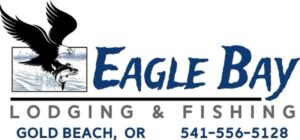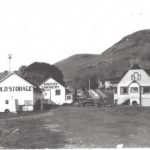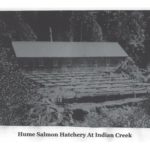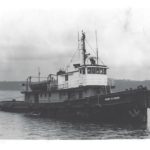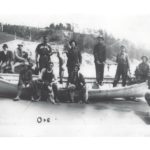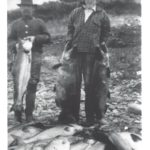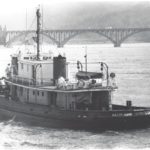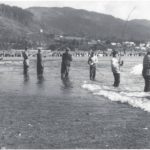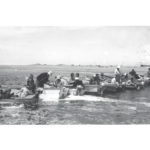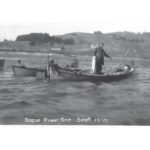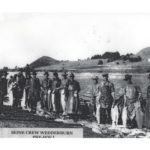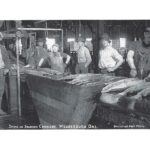History of the Property
This property was originally settled by Mr. & Mrs. Ike Smith in 1915. Ike Smith was a commercial salmon fisherman and he converted his property into a fish processing cannery and cold storage in the early 1920s. The cannery was named Smith’s Cannery. It was found in old records that Ike Smith caught 7,725 pounds of salmon from the Rogue River in the month of July 1921. After many successful years as a commercial fisherman and operating a cannery, Ike Smith had to adjust his business since the Rogue River was permanently closed to commercial fishing in 1935.
In Walt Schroeder’s book, “They Found Gold on the Beach”, it says, “In 1935 the Rogue River was closed to commercial fishing and sport fishing boomed. A former commercial fisherman, Ike Smith, wanted to stay here and keep his hand in the fishing business he has known for so long. He started a cannery for preserving fish caught by the fishermen and women who flocked to the Rogue. To consume the waste from the cannery, he raised mink as a commercial enterprise. He also had a cold storage locker that locals could rent for storing frozen fish, venison, elk and other foodstuffs. His cannery changed hands several times and in 1964 was known as Rogue Bay, Inc. Rogue Bay sold fishing tackle and bait, scheduled for a charter boat, sold fresh seafood, and rented food lockers.”
In the 1950’s the then known “Sportsman’s Cannery” on the property was owned by the grandfather of local generational fishing guide, Shaun Carpenter. Now if you have been around the fishing scene in Gold Beach before, you then certainly know about the trophy button pins for the salmon caught that are over 30, 40 & 50 pounds. This all started here at this cannery.
The story is, Mr. Gordon Asher was a clever business marketer. He knew that it was very difficult for the tourists that had come for fishing to take their catch home with them because ice was a rare commodity and travel home sometimes could take many days and spoil the fish. Mr. Asher would trade smoked fish and canned fish that would not spoil for the tourists to take home with them for the freshly caught salmon of the day. He also knew that the largest profits came from the largest salmon. He wanted the largest salmon brought to him and not the other local canneries, so he needed to come up with an incentive or “trophy” to lure in the tourists and their large salmon. Thus, the creation of the trophy button pin. Tourists were given these button pins for salmon that started at 30 pounds or larger. Bronze pins were given for salmon 30-40 pounds, silver pins for salmon 40-50 pounds, and gold pins for salmon 50 pounds or larger. The word spread fast among the tourists and the locals about these trophy buttons pins. It seemed everyone wanted a trophy button pin for the large salmon they had caught in order to show off their catch, and soon thereafter everyone was bringing in their salmon to Mr. Asher to see if they would get a trophy button pin. The trophy button pins still exist locally for salmon caught that are over 30 pounds.
The recently renovated “Green” House used to be the original cold storage building from the cannery days. You can see the building in the old black & white photos of the property hanging in each rental unit. The upstairs was installed in the 1950’s and was always an apartment for the workers of the cannery. The down stairs room was originally cold storage lockers for the cannery and for the people of Gold Beach and Wedderburn to store their perishables. In 1964, the “Big Flood”, these buildings on the property were some of the very few that actually survived. During remodels through the years, river rock was found embedded in the old siding one foot below the upper windows of the house. That was some serious flooding!
